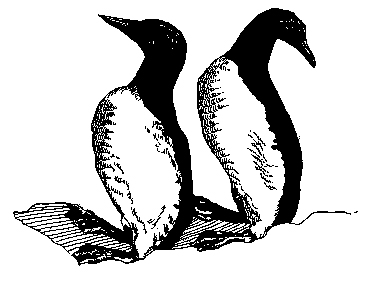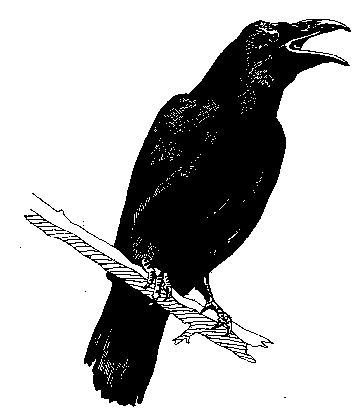|
| ||||||
Special | A | B | C | D | E | F | G | H | I | J | K | L | M | N | O
P | Q | R | S | T | U | V | W | X | Y | Z | ALL
C |
|---|
Common Eider:
Kasami{ - Somateria mollissima Kasami{ al}um sangis malganangis ilagaan angunazas. Hagumatakus kasamim ali}ingis quhma{ ama qaxchikda{ angali{takus, kitangis ama hiiyukangis kanuuyam angalidigaa angali{tazas. Kasamim ayagangis chumnugim qaxchikdaa angali{tazas. Qan'gim aslaan sakang ala}um ilan al qanagnas agudix, saaqudgi{ amaatxaqadal aguun tana{ adaa}aasal saahmla}ii}dix agacha anuxtaqalizakus. Hawakus tan}is uuquchiingi}ulangis agatingis kugan saahmla}izakus. Ti}yum adungis ilan isxa{ agu{tal ilan saahmla}izas. Isxangis chungus ama qiigas ilagaan agu}izas. Kasami{ atuung saahmla{taza{, saahmlangis chid}aayum angalidigaa angali{tazas. Hawakus kasamim chiidangis migal a}al agudix kukutus ngaan asa}al hagumaalazakus. Slum aslaan saahmla}il agudix sadagikus maalal ti}yum ilan alaaza{siilal aygaxs sulalgazakus. Saahmlangis agiitangis lalgal, aqadaguun, qalgazakuu maalal hagumaalazas. Hamahliim chungungis lalgal, aqadgungis qiigaa hagyayal ilaan kahngiitis aguzanas, aku}aan wayaam qigulgazalaka}is, Amilaayam kahngiitingis agatingis wayaam su}azakus. Kasamim ali}ingis slum aslaan sadaglaka}is, hawakus ayagangis agatingis sadagzas. Saaqudikinga masxal aguun kasamim ali}ingis chngulil hakangis txidix isxanal agudix ana{ mal iga{taakalaka}is, sadagii}utazas. Hawakus ha}aa}us ilan aslixsxal agungis anagili{ su{tal lalgazaqas hiiIa{tazas. Wayaam haqaya}azalaka}is. Common Eider - Somateria mollissima The eider is one of the larger saltwater ducks. The drake is black and white. Their feet and bills are yellowish in color. The hen is all brown in color. During the winter, the eiders spend their time way out at sea. When spring comes, they approach land and get ready to lay eggs. They prefer nesting on islands that do not have any foxes. They nest in the long grasses. The nest consists of grass and down. They usually lay six eggs which are light green in color. When the egg hatches, the baby is called kukutu{. During the summer, the eiders and their eggs are gathered. The technique used for doing this is to walk quietly along where the birds are nesting. As soon as one is spotted, it is grabbed with both hands. This is how the duck and the eggs are caught and eaten. Some time ago, the eider down was collected and used for making pillows. Now, however, the whiteman made pillows are used. The drakes are not fat during the summer, but the hens are. In the fall, however, the drakes when shedding their feathers, are very fat. During this time, they cannot fly. They are then cornered in small lagoons and clubbed, so they say. This method is not used any more today. |
Common Goldeneye:
Hanim Kamgituu - Bucephala clangula Hanim kamgituu hanim saa amaku{, agiichigaan hanis kda}ilakan agungis hanis ilan uku}aza{, ala}u{ ila{taa tana{taa}utaza{. Hanim kamgitugan ali}ii sam quhmagan sugdanana{ liidaa aza{. Hachii qaxchikdal kamgii chid}aayul, kamgii angunana{ liidaa}utaku{ maalal hanim kamgituu hiila{taza{. Hanim kamgitungis kitakix chumnugim qaxchikdana{ liidaa angali{tazas. Hanim kamgitugan ayagaa quuhmliix angali{tana{ liidaku{, quhma{ ila{taa aa}utaza{, hingamataku{ kamgii chumnugim qaxchikdagan i}duxtana{ liidaa angali{taza{. Sam i{atungis azas, hagumatakus ay{aasi{ umang tunuku{ tutal agudix igazas, hagumatakus maalal ahmi}angis axsxangis kayu}nanaa{tazas. Iga{tal agudix izanaza}ulas, quhmana} liidakus slachxiza{ malgal aguun, igasingis hmigala}na{ liida{ agu{tazas. Udang alanazana}ulas aku}aan, wayaam Ilisnazalakas. Udang al qanaxs aqadagudix, qanikinga masxal aguun chugaanul aqadagudix ilan saahmla}izamchix ilan saahmla}il aqadagudix, saaqudikinga udaa}aa}utazas.
Common Goldeneye - Bucephala clangula The common goldeneye is a freshwater duck. Whenever there is no ice on the lakes, they are seen there. They also spend their time in saltwater. The drake is a fancy looking white duck. Its back is black. It has a green head. Its head looks very large and that is why the Aleuts call it the lake's big head. Its feet are yellowish black. The hen is grayish. Its bottom side is white, and its head is brownish. The goldeneyes are easily scared away. All it takes to set them off flying is the noise of a running motor. That is why they are hard to hunt. They are identifiable easily when in flight in good weather. When they are in flight, they look whitish and their wing beats can be heard whistling over head. They used to be plentiful around here, but nowadays that is not the case. The goldeneyes spend their winters here, and come springtime, they go north to their nesting grounds. After laying their eggs, they return again in the fall. |
Common Loon: Qigu{ - Gavia immer Qigu{ saI}u{ aku{, aIa}um ilan al aguun hamang kiduxtana{ liidaza{. Qan'gim aslaan qigu{ chuqagan ilagaan ilidaa akiita{ quhmaza{, aku{ kangayuu qaxchikdaza{, hingamataku{ hiiyukam chutxidigaa mataza{. Slum aslaan hakangis txidix isxanal aguun, angalingis txidix isxanazas. Kamgingis txidix chid}aayutil ama hachigan hangadan huzuugizaa quhma{ tu{ila{taasaqalizas. Sas malganangis ilagaan sam chlaqatuu aza{. Chla{tal amaatxa{ hnuza{. Sam chlaqatungis akus hakangis amnil hiila}aza{, mal qigu{ mataza{. Hakangis hitmilgangis amnizas. Hingamaku{ mal qigu{ uxilgalakan aguun, taangam akinagan ilan a}aI aqadaguun taaman hitmilgal aguun hakaa amniza}ulax. Qigu{ qalgal aguun isu}im ilagaan txin hikitaza}ulax, huzugaan qakuchas qazaku{ mal, qanuna{ liidaza{. Slum aslaan hanis tan}i}ingis ilan agach saahmla}izas. Slum huzuu udaan ahmi}a tana{tazas. Qan'gim aslaan ala}um kugan haang uku}azas, aqadaguun slu{ masxal aguun saahmla}ikus mal uku}ayaxsxaza}ulas.
Common Loon - Gavia immer The common loon is a large bird. When it is seen on the water, it looks as though it is lying in it pretty low. During the winter, the loon is white from beneath its throat down to its abdomen. Its back is black, and it has a very sharp bill. During the summer, the loon changes its color. The head turns green and the back gets full of white spots. It is often said that birds that dive have very tight feathers, and they are hard to pluck. The loon is this kind of a bird, and it is hard to pluck. If the skin of these birds is not stripped off them, the loon is kept in hot water to make the feather plucking chore easier to do. When the loon is eaten, its flesh tastes very similar to a seal. This is because it feeds on fish, and it has a fishy taste to it. During the summer, the loons make nests on small islets in the lakes. The loans stay around here all year round. During the winter, the loons can be seen often in the water. In the summer, however, they are hardly seen because they are usually nesting at that time. |
Common Murre:
Ulungt{a{ - Uria aalge Ulungt{a{ (Sakita{), ala}um saa aku{ hachii ama kamgigan huzuu qaxchikdaku{, chuqagan ilaan ilidaa akiita{ quhmaza{. Ulungt{am hiiyukaa chutxidigal ama qaxchikdaza{. Slum aslaan iganas ama ala}um achidan adungis ilan saahmla}izas. ala}um kugan al agungis agiichigaan txidix as hasinal haang akus uku}azas. Sam ala}um qamdagan ilan aatungis azas, chlaqatuu}utazas. Qagaan unangangis agatingis qa{takan hiila{tazas. Wang At{am kugan qalgazaIaka}is, slum aslaan imya{sxal aguun, um}i}ilgalakan aguun, agiichigaan uIungt{a{ kalu}al um}i{talgazaku{. Slum aslaan saahmla}il aguun, ataqan uhlii saahmla{taza{. Hagumatakus kalulgazalaka}is mal, slum aslaan hasinal haang iga{takus uku}azas.
Common Murre - Uria aalge A murre is a saltwater duck. It has a black back and head, and white feathers from the throat to the belly. The murre's bill is sharp and black. During the summers, the murres nest on the cliff sides and inside the caves along the shores. When they are seen on the water, they are usually in big flocks. A murre is a duck that likes being in deep water, it is also a diving bird, and it is told that the Eastern Aleuts eat them. Here on Atka, murres are not eaten. During the summer, if someone goes out deep sea fishing and does not have bait, the murres are shot and used for bait. During the summers, the murres lay only one egg. Since they are not shot for food during the summer, they can be seen flying around in great numbers. |
Common Raven:
QangIaa}i{ - Corvus corax Qanglaa}i{, sam huzuu qaxchikdaa aku{, tanam saa aza{. Kitangis qaxchikdakus qagal}ingis aduu}utazas. Wan sa{ alaaza{silgaa haqataza}ula{, huzugaan tununa{ Iiidaza{. Qanglaa}i{ iga{tal aguun ila{taa ilagaan ida}aza}ula{, hakang inkam ilagaan itmigna{ liida{ agu{tal agiichigaan iga{taza{. Sam qaagus ilan aatuu aza{, qaagus hyusxaqas agungis ilan al qaatuza{. Sas malganangis ilagaan itaangil saahmla}izas, iganas ilan isxa}izas, isxangis ala}um achidagaan qahngum qakangis ama iiklaygis ama qiigas ilagaan agu}izas. Qanikinga malgal agiichigaan qaniix malgal aa}aku{ saahmla}izas. Qanglaa}i{. Siching asxuunulax uluung aaka{ saahmlas mataza{. Saahmlangis chid}aayuna{ liidakus tu{ila}izas. QangIaa}is udang al slum huzuu agzas.
Common Raven - Corvus corax The raven is a black land bird with feet that have sharp claws. This bird does not know what being quiet means. It seems to be always cawing. When a raven is flying, it is easily identifiable by the dives it makes. It sometimes looks as though it is going to fall to the ground, but it never does. A ravens likes being around garbage and waste. Whenever garbage is dumped, they feed on it. Among all the birds, the raven is the first to lay eggs. The raven's nest consists of dried seaweed, sticks and grass. The nest is usually situated on a cliff. Sometimes in the fall, even if it is snowing, the raven lays eggs. It lays four to seven spotted eggs. Ravens are present all year around. |
Cormorant:
Aagayuu}i{ - Phalacrocorax pelagicus Aagayuu}i{ or Aagayuu{, sam uyugan aduu aza{. Hingamataku{ kamgikucha{ mataza{. Aagayuu}im huzuu qaxchikdaza{. Hiiyukaa iIa{taa adul ama ichaaqidal agalungis iga}iisi{ liidaza{. Sam chla{taatungis azas, chla{tal qakuchas mayaa{takus mal hagumazas. Agiichigaan haang tanam angan uchiginangis uku}azas, higitina{ liidal chla}zas. Hitxingis ila{tangis aduzas. Aagayuu}is agiichigaan hasinal haang quganam kugan akus uku}azas. Ala}um kugaan iganaa{s aguun txin kayu}asana{ liidaza{. Slum aslaan hawakus iganas ama adus ilan saahmla}izas. Isxangis qahngus ama qiigas ama agiichigaan kingdam ilagaan agu}izas. Saahmlangis chid}im angalidigaa angali{tazas. Saahmlangis unalgal aa}akus qangana{ liidaza}ulas hiila{tazas. Hagumatakus chiidangis a}al agudix haka}iiguzaza}ulas, qach{idigana{ liidazas. Aagayuu}is udan agacha tana{tal sluzas. Hamahliim aslaa qalgakuu alakan aguun kalu{tal qalgazaqas hiiIa{tazas. Wayaam haqaya}azalaka}is.
Pelagic Cormorant - Phalacrocorax pelagicus The cormorant is a bird with a long neck. It also has a very small head. It has a long narrow bill that looks like the edge of a hand-saw. Cormorants like diving. They dive for fish, and that is why they dive so much. Sometimes they can be seen diving near the shore. When they dive, they look like they are leaping out of the water and then down under it again. They have long tails. Sometimes the cormorants are seen resting on the rocks in great numbers. When a cormorant is seen trying to take off from the water, it really looks as though it is having a hard time. During the summers, the cormorants nest on the sides of the cliffs. This is where they lay their eggs. The nests are made out of seaweed and grass, and sometimes twigs and branches. The eggs are light blue in color. When the eggs are cooked, they appear not to be cooked at all, so I have been told. When the eggs hatch, the babies do not have very much down. They really look very skinny. These birds live here year round. Long ago when food was hard to get, the cormorants were shot for food. Today, however, they are not eaten. |



 At{am Sangis
At{am Sangis